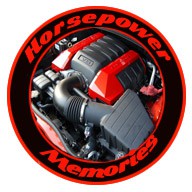1968-1970 Dodge Coronet Super Bee
1968
Dodge introduced the Coronet Super Bee during the middle of the 1968 model year. It was based on the Coronet 440 and was available as a coupe with pop-out rear windows. The car got the Super Bee moniker because it was based on the “B” body designation given to many Dodge midsized cars. It was easy to pick the Super Bee out of a crowd by its matte black grille, “power bulge” hood, and rear, dual wraparound bumblebee stripes. Other exterior features include F70 x 14 red line tires and Super Bee badging.
The interior got a standard bench seat, seat belts, sill-to-sill carpeting, and a padded rallye-style dashboard. Instrumentation included a circular speedometer, oil and temp gauges, and an electric clock. Drivers could order a tachometer at extra cost.

The standard powerplant was a 383 cubic-inch V8 with 335 horsepower and 425 lb.-ft. of torque. It borrowed heads, valve gear, cam, and exhaust manifolds from the 440 Magnum. A four-speed manual transmission with heavy-duty clutch was standard. A column-shifted TorqueFlite three-speed automatic was optional. The 383 was fairly quick with a 0 to 60 time of 7.1 seconds and a quarter mile time of 15.0 seconds at 96 mph.
If the 383 didn’t quicken your pulse, the mighty 426 Hemi was also available. The Hemi pumped out a massive 425 horsepower and 490 lb.-ft. of torque. The Hemi was good for a 0 to 60 in 5.3 seconds and a quarter mile in 13.55 seconds at 105 mph.
1969

The Coronet Super Bee was offered as a coupe and a hardtop for the 1969 model year. Exterior changes included a new grille design and revised taillamps. The Super Bee striping was also changed to a single, wider design.
The 383 and 426 Hemi carried over from the previous model year. A new Ramcharger air induction system was available for the 383 and standard on the Hemi. It featured two large hood scoops and an under-hood air plenum that fed fresh air into carburetor. There was also a switch for the driver to choose between warm and cold air.

The big news for 1969 was the addition of the 440 Six Pack to the engine lineup. The 440 Six Pack consisted of three Holley two-barrel carbs resting atop an Edelbrock aluminum manifold. This engine also differs from the standard 440 with the addition of molybdenum-filled piston rings, flash-chrome valves, and dual-breaker distributor. Buyers could choose between a four-speed manual with Hurst shifter or three-speed automatic. The 440 Six Pack was rated at 390 horsepower and 490 lb.-ft. of torque. Super Bees equipped with the Six Pack are easily identified by their matte black fiberglass hood with four NASCAR-style hood pins and hefty hood scoop with “Six Pack” lettering. The Six Pack may have set you back $463, but keep in mind, it’s still around $500 cheaper than the 426 Hemi.
Car Life put the Six Pack to the test and walked away with a 0 to 60 time of 6.3 seconds and racked up a quarter mile time of 13.8 seconds at 104.2 mph. Car Life stated, “In its element, meaning on the strip, the ‘Bee was so good that it was almost a drag (sorry). It ran with so little ceremony that it was like driving a family car.” The magazine went on to say the Six Pack was a drag-strip terror, a Hemi equalizer, and a 3,800-pound slalom car.
1970

The Super Bee received another makeover for the 1970 model year. Changes included two looping chrome bumpers surrounding the twin grilles, a “power bulge” hood with dual hood scoops, and revamped taillamps. Buyers could choose between bumblebee striping or an optional, no-cost longitudinal performance stripe. It was still available as a coupe or a hardtop.
The 383, 440 Six Pack, and Hemi all returned for 1970. In order to help keep down the price of the Super Bee, a three-speed manual was now standard equipment. However, buyers could still opt for a four-speed manual or a TorqueFlite three-speed automatic.

For their January 1970 issue, Super Stock Magazine got hold of a 440 Six Pack and took it to a local drag strip. Several quarter mile passes were done with a best time of 14.46 seconds at 101.58 mph. Not too shabby for a car tipping the scales at just under 4,000 pounds.
However, quality issues put a bee in their bonnet. The magazine staff complained about rain leaks in the interior and trunk and found rust on exterior trim pieces. The magazine proclaimed “We would trade all the extra power of the engine for tight windows and doors.”

The Dodge Coronet Super Bee may have been a budget muscle car, but it was far from modest. With V8 power and a host of standard features, the Super Bee was proof you didn’t have to have deep pockets to be a member of the Scat Pack. Like many muscle cars of its era, the Super Bee’s time was short-lived. Between Uncle Sam tightening emission restrictions and insurance companies charging exorbitant rates on muscle cars, it wouldn’t “bee” long before the demise of the muscle car. Long live the Super Bee!


Leave a comment